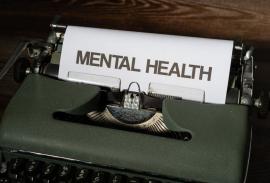
Throughout history, subsequent generations of young people have experienced a myriad of challenges - perhaps partly shaped by the dynamically evolving surroundings they find themselves in.
And now more and more, there is a global increase in awareness of mental health issues among the youth.
“There is increasing awareness of mental health problems among young people, not only in South Africa but globally. It seems that the prevalence of common mental disorders and suicidal behaviours among young people are increasing,” says Professor Jason Bantjes.
Bantjes is the Chief Specialist Scientist within the Mental Health, Alcohol, Substance Use and Tobacco Research Unit at the South African Medical Research Council (SAMRC).
The council is a public entity reporting to the Ministry of Health mandated to promote the improvement of the health and quality of life of the population of the republic.
He points out that a recent national student mental health survey found that in the preceding 30-days, 16.3 % of university students reported clinically significant symptoms of depression while 6.6% reported a substance use disorder.
“In other research we have also shown that these rates have been steadily increasing since 2015, and that the age of onset, that is the age at which mental health problems first appear, seems to be getting lower and lower.”
However, while some struggle with mental health challenges, many of the country’s young people are thriving and doing well, sometimes under difficult circumstances.
“It would be a mistake to perpetuate a crisis narrative that tries to present all young people as vulnerable and in distress. Some young people are struggling with their mental health, but many are not. In the SA national student mental health survey we conducted in 2020, approximately 80% of students reported that they were in good or excellent mental health.”
Bantjes highlighted that many schools and universities are working hard to improve the mental health of young people and creating communities and environments that promote psycho-social development.
While more can be done, “we are constantly learning about new interventions and developing new strategies.”
At the same time, more can be done to improve young people’s access to effective and affordable treatments, especially for serious mental health problems. More can also be done to support teachers and parents who take care of young people with emotional and behavioural problems.
While teachers can help to create environments that are conducive to mental health like reducing incidents of bullying, helping young people to envisage their futures as well as create schools where learners feel like they belong, it is not realistic or fair to expect teachers and lecturers to take on responsibility for the treatment or day-to-day management of young people with mental health problems.
Meanwhile, stigma around mental health illness continues to remain the elephant in the room.
Speaking at the Mental Health conference earlier this year, the Deputy President Paul Mashatile said that a deficit on society’s understanding of mental health, causes of illness and treatment exists. He told the conference held in April that stigma leads to the stereotyping of those who suffer from mental health illness.
Bantjes said while public awareness campaigns do exist, stigma about mental illness and substance use are barriers to seeking help.
“We can do more to promote and encourage appropriate help seeking, which would include helping people to recognise when they need psychological help for an emotional or substance use problem.
“There are many public awareness campaigns about mental health and many public conversations. But talking is not enough. We need resources to provide accessible, affordable, effective and acceptable services that are focused on the needs and preferences of young people. This is much harder to achieve than just talking about the problem.”
One would also be tempted to assume that the unemployment rate - which stands at 32.9% - also has a bearing on young people’s mental health.
“We know that social and economic problems like poverty and unemployment have a serious deleterious impact on mental health. Reducing poverty and inequality is an important part of both suicide prevention and mental health promotion,” said Bantjes.
Meanwhile, South Africa has a new Mental Health Policy Framework and Strategy for 2023 - 2030. According to the Deputy President, the newly approved strategy encompasses critical mental health promotion interventions which include mental health promotion, prevention of mental health illness, and improvements in mental health service delivery platforms, including information management and governance.
The professor is of the view that the framework is thorough and well thought out but that the “challenge is going to be turning this strategic plan into action.”
Just as the youth of 1976 fought for a better tomorrow, young people today can confidently fight mental health challenges and win. – SAnews.gov.za


